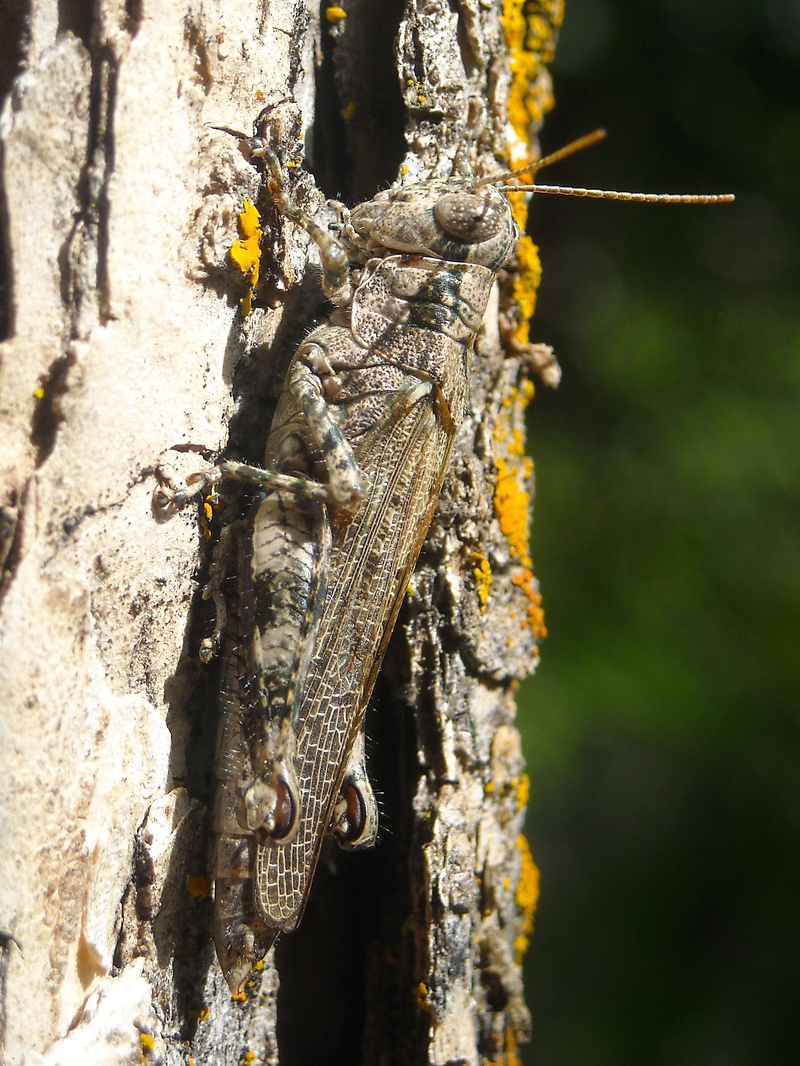Brust publishes paper about newly discovered grasshopper

CHADRON – When Dr. Mathew Brust, associate professor of physical and life sciences at Chadron State College, traveled a few miles south of campus in July 2014 to collect hackberry butterflies for Steve Spomer, a colleague and butterfly expert in eastern Nebraska, he had no idea he would happen upon a pine tree grasshopper, formerly only documented 400 miles to the east.
In an article Brust published with a colleague about the discovery in the peer-reviewed “Journal of Orthoptera Research” this summer, he said knowledge about the range and biology of the Melanoplus punctulatus, also called the grizzled grasshopper or pine tree grasshopper, is lacking in quantity and quality. He plans to more thoroughly study the insect, traditionally found in eastern U.S. woodlands, next summer.
“This happened totally by chance. I was looking for hackberry butterflies, not a tree grasshopper,” Brust said.
He said the first immature grasshopper was found about four feet off the ground on a hackberry leaf in the King Canyon area. He took it home and studied the specimen where he determined its genus and species, based on his experience.
“I said, ‘There’s no way you should be out here.’ I was in total disbelief. I always thought of them in the eastern woods,” Brust said.
He later found an adult specimen in Chadron State Park. Based on repeated observations during various seasons and times of day, Brust estimates there is an isolated annual population of about 150 in the park. He has also found this species at two other locations in Dawes County.
“There are two possibilities. This population is either truly isolated or nobody has been looking for or documenting them,” Brust said.
Since the population is so small, Brust got it listed on the National Heritage Inventory System as a species of special concern in Nebraska. This status flags the species for observation by scientists, but does not elevate the species to a protected status.
“It’s fun to be on the front lines of science. This research didn’t really cost anything. It shows you can discover things in your backyard at low cost,” Brust said. “The more I study the microecology of the Pine Ridge, I find it is its own thing. There’s nothing else like it. It has some aspects of the Black Hills and some of eastern woodlands, plus the spring-fed streams create interesting and unique cool corridors near the ground.”
—Tena L. Cook, Marketing Coordinator
Category: Campus News, Employee Awards & Achievements

